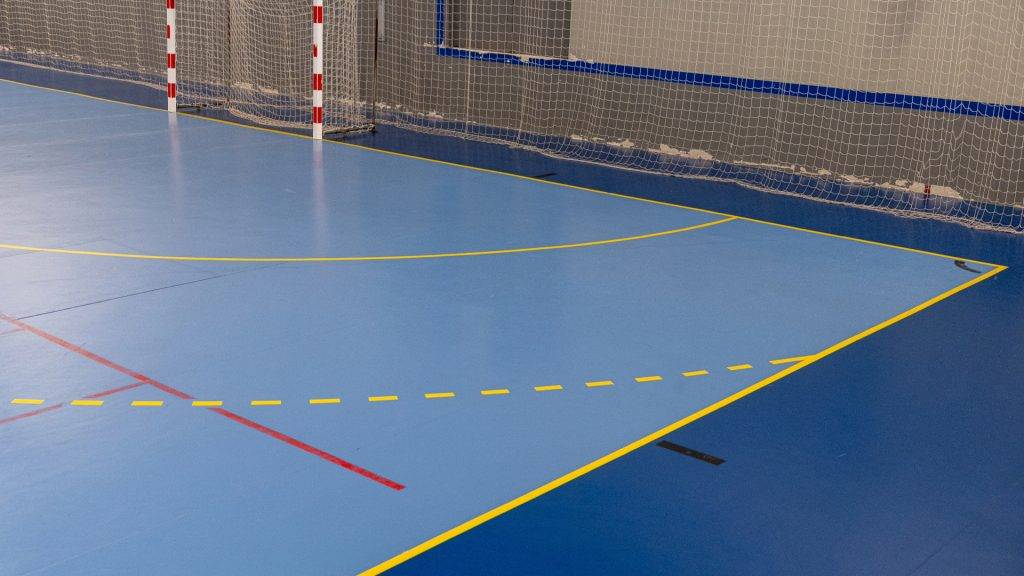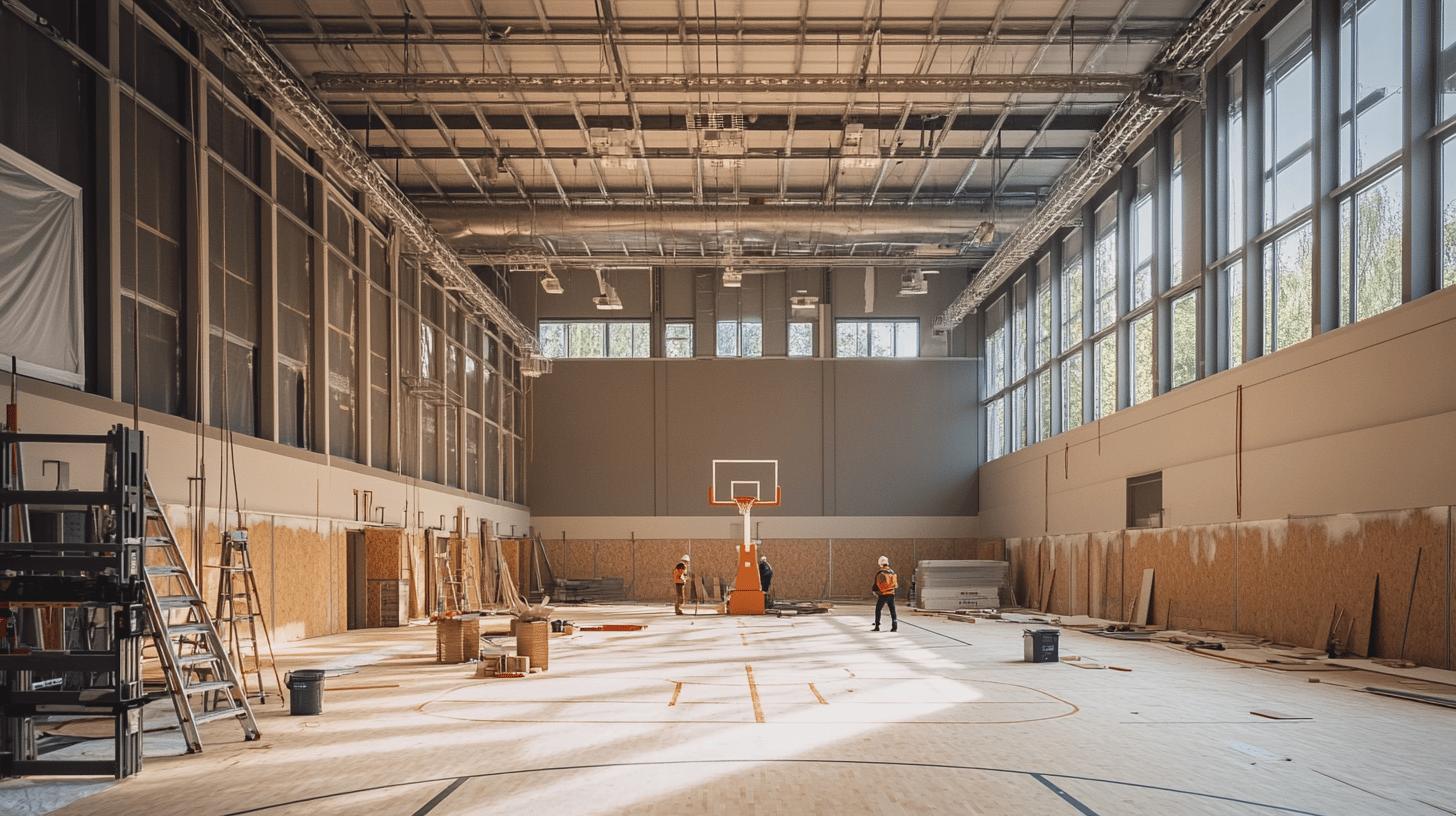Ever wondered how something as simple as a line marking could transform the dynamics of a game? Whether you’re an avid sports fan or a facility manager, the impact of line markings on game play and safety is profound. Line markings don’t just delineate boundaries; they orchestrate the rhythm of the game, guiding player movements and ensuring adherence to the rules. This article delves into the essential role of line markings, their influence on strategy, and their crucial role in player safety. Read on to uncover how these seemingly simple lines make or break the game.
Importance of Line Markings in Sports
Line markings are essential in sports for defining the playing field and ensuring adherence to game rules. By clearly delineating boundaries, zones, and positions, they provide a structured framework that enhances the visual clarity for players, referees, and spectators. Correct line markings are crucial for maintaining the integrity and flow of the game, ensuring that all participants understand the limits within which they must operate.
6 key aspects influenced by line markings:
- Boundary definitions
- Scoring zones
- Player positions
- Offside/penalty areas
- Visual guidance
- Game flow regulation
Boundary definitions are vital in establishing the physical limits of the playing area, preventing disputes and ensuring fair play. Scoring zones, such as goal areas in football or end zones in rugby, help determine points and outcomes. Player positions are guided by the markings, ensuring that athletes start and move within designated areas, thus maintaining game structure. Offside and penalty areas are marked to enforce rules that govern player behaviour and maintain competitive balance. Visual guidance through clear and distinct markings assists players and officials in making quick, accurate decisions. Finally, game flow regulation is achieved as markings provide a visual reference that helps maintain the pace and rhythm of the match.
Impact on Game Play Dynamics
Line markings significantly impact the dynamics of game play by dictating player movements and strategies. They ensure smooth game flow and equitable play by providing clear, visual boundaries that all participants can easily identify. With proper markings, players can navigate the field, court, or pitch more efficiently, which helps maintain the pace and rhythm of the game. This clarity is essential for both players and officials in making quick, accurate decisions that uphold the integrity of the sport.
In football, the centre circle, penalty area, and touchlines are crucial in guiding player positions and movements. For instance, the offside rule relies heavily on the accurate placement of these lines. In basketball, the three-point line and free-throw line define scoring opportunities and player positioning during offensive and defensive plays. Tennis relies on baseline, service lines, and side-lines to determine valid play areas, impacting serve strategies and rally tactics.
| Sport | Line Marking Requirements | Impact on Game Play |
|---|---|---|
| Football | Centre circle, penalty area, touchlines | Defines offside, goal scoring areas, and boundaries |
| Basketball | Three-point line, free-throw line, court boundaries | Determines scoring zones, foul shots, and player positions |
| Tennis | Baseline, service lines, side-lines | Defines valid play areas, impacting serves and rallies |
Accurate line markings are critical for strategic planning in sports. Teams develop tactics based on these defined areas, tailoring their training and in-game strategies to leverage the placement of lines. In football, teams might exploit spaces near the touchline for wing play. Basketball teams often create plays around the three-point line to maximise scoring opportunities. Tennis players use service boxes to plan their serve-and-volley tactics. Thus, precise markings not only ensure fair play but also allow teams to execute well-crafted strategies effectively.
Ensuring Player Safety Through Line Markings

Line markings play a critical role in ensuring player safety by clearly defining safe zones and hazard areas. Proper markings help prevent collisions and injuries by guiding player movements and ensuring compliance with safety standards. Clear and distinct line markings on sports fields, courts, and pitches act as visual cues that indicate where players can and cannot go, thus minimising the risk of accidental contact and ensuring a safer playing environment.
In rugby, for instance, the 22-metre lines and the try lines are crucial in guiding player movements and maintaining safe play zones. In hockey, the D-shaped shooting circle helps prevent dangerous play near the goal. Athletics tracks have lane lines that keep runners separated, reducing the risk of collisions during high-speed sprints. These examples illustrate how line markings are essential for ensuring that players stay within designated areas, thereby reducing the likelihood of accidents and injuries.
5 safety benefits of proper line markings:
- Clear visibility of boundaries
- Prevention of collisions
- Guidance on safe play zones
- Compliance with safety regulations
- Reduction of trip hazards
Regular maintenance and health & safety testing are imperative to uphold the efficacy of line markings. Over time, markings can fade or wear away, diminishing their visibility and effectiveness. Routine inspections and timely repainting or reapplication ensure that these markings continue to serve their purpose. Compliance checks with established safety standards must be conducted to verify that the markings meet the required guidelines. This proactive approach not only helps maintain a safe playing environment but also reinforces the importance of adhering to health and safety protocols in sports.
Line Marking Regulations and Standards
Adhering to line marking regulations and standards is essential for ensuring fair play and safety. Compliance with these guidelines ensures that games are conducted within a standardised framework, which is crucial for both player safety and the integrity of the sport. Governing bodies such as FIFA, FIBA, and the ITF establish these standards to provide uniformity and fairness in official games and tournaments.
6 sports and their governing bodies:
- Football (FIFA)
- Basketball (FIBA)
- Tennis (ITF)
- Rugby (World Rugby)
- Hockey (FIH)
- Athletics (IAAF)
Non-compliance with line marking regulations can lead to severe consequences, including game cancellations, player injuries, and penalties for teams or venues. Incorrect or faded markings can cause confusion during play, leading to disputes and potentially unsafe situations. Governing bodies may impose fines or disqualify teams that do not adhere to the standards, impacting the credibility and reputation of the sport. Regular checks and maintenance are therefore imperative to ensure that line markings meet the required guidelines, thus safeguarding both the players and the integrity of the game.
Innovations in Line Marking Technology
Advancements in line marking technology have significantly enhanced the accuracy and precision of field and court markings. Precision marking techniques, such as laser-guided machines, ensure that lines are applied with exact measurements, reducing human error. This accuracy is crucial for maintaining the integrity of the game and ensuring that boundaries and zones are clearly visible to all participants. Moreover, innovations in marking technologies contribute to the durability and longevity of the markings, making them more resilient to wear and tear from regular use.
4 recent innovations in line marking technology:
- Laser-guided marking machines
- Eco-friendly marking paints
- Thermoplastic materials
- Automated marking systems
The benefits of these technologies are multifaceted. Laser-guided marking machines provide unparalleled precision, ensuring that lines are consistently straight and accurately placed. Eco-friendly marking paints reduce environmental impact by minimising harmful chemicals, contributing to a more sustainable approach to sports field maintenance. Thermoplastic materials offer superior durability, withstanding heavy foot traffic and varying weather conditions, which extends the lifespan of the markings. Automated marking systems streamline the application process, saving time and labour costs while maintaining high standards of accuracy and consistency. These innovations collectively enhance the quality, sustainability, and efficiency of line marking practices in sports.
Best Practices for Line Marking Maintenance
Regular maintenance of line markings is crucial for ensuring their visibility and effectiveness in sports. Consistent upkeep is essential not only for maintaining the aesthetics of the playing surface but also for guaranteeing player safety and compliance with game regulations. Poorly maintained markings can lead to confusion, affecting game flow and potentially causing injuries. Therefore, routine inspections, timely repainting, and using high-quality materials are fundamental practices to uphold the integrity of the markings.
Common issues that arise with line markings include fading, peeling, and general wear and tear. Fading occurs due to exposure to sunlight and weather conditions, which can diminish the visibility of the lines. Peeling can result from the use of substandard materials or improper application techniques. Wear and tear are inevitable due to the high foot traffic and regular use of the sports surface. Solutions to these problems include using UV-resistant paints, ensuring proper surface preparation before application, and employing durable materials like thermoplastics for longer-lasting results.
| Surface Type | Maintenance Frequency | Recommended Actions |
|---|---|---|
| Hardwood | Every 6 months | Repainting, surface cleaning, and sealing |
| Synthetic Turf | Quarterly | Inspection, repainting, and brushing |
| Grass | Monthly | Repainting and mowing |
Professional services play a vital role in maintaining high standards for line markings. Companies like Courtship Flooring offer expertise in applying and maintaining these markings to ensure they meet the required specifications and safety standards. Professional maintenance services include regular inspections, precise repainting, and the use of advanced equipment to achieve consistent quality. By relying on experts, sports facilities can ensure that their markings remain clear, durable, and compliant with regulations, thereby providing a safe and efficient playing environment for all users.
Final Words
Understanding the importance of line markings in sports is crucial for maintaining game integrity and safety. Line markings define boundaries, guide player movements, and ensure compliance with game rules and safety standards.
The impact on game play dynamics is significant, as markings influence both player strategies and game flow. Player safety is enhanced through clear markings, which help prevent accidents and injuries.
Adhering to line marking regulations is essential for fair play, and innovations in marking technology have further improved accuracy and durability. Regular maintenance is key to preserving effective and visible markings.
By recognising The Impact of Line Markings on Game Play and Safety, sports facilities can ensure a better experience for players and spectators alike.
FAQ
Importance of Line Markings in Sports
Q: Why are line markings essential in sports?
A: Line markings are essential for delineating boundaries, zones, and positions. They ensure the game is played according to rules and enhance visual clarity for players, referees, and spectators.
Q: What aspects of sports are influenced by line markings?
A: Line markings influence boundary definitions, scoring zones, player positions, offside/penalty areas, visual guidance, and game flow regulation.
Impact on Game Play Dynamics
Q: How do line markings impact game play dynamics?
A: Line markings dictate player movements and strategies, ensuring smooth game flow and equitable play. Different sports have unique marking requirements that affect how the game is played.
Q: Can you give examples of how line markings affect different sports?
A: In football, markings define goals and penalty areas; in basketball, they outline key zones such as three-point lines; in tennis, they mark boundaries for serves and rallies.
Ensuring Player Safety Through Line Markings
Q: How do line markings contribute to player safety?
A: Line markings clearly define safe zones and hazard areas, preventing collisions and injuries by guiding player movements and ensuring compliance with safety standards.
Q: What are the safety benefits of proper line markings?
A: Safety benefits include clear visibility of boundaries, prevention of collisions, guidance on safe play zones, compliance with safety regulations, and reduction of trip hazards.
Line Marking Regulations and Standards
Q: Why is it important to comply with line marking regulations?
A: Compliance with regulations ensures fair play and player safety. Different sports governing bodies have specific guidelines must be followed for official games and tournaments.
Q: Which sports bodies have specific guidelines for line markings?
A: Governing bodies include FIFA for football, FIBA for basketball, ITF for tennis, World Rugby for rugby, FIH for hockey, and IAAF for athletics.
Innovations in Line Marking Technology
Q: What are some recent innovations in line marking technology?
A: Recent innovations include laser-guided marking machines, eco-friendly marking paints, thermoplastic materials, and automated marking systems.
Q: How do these technological advances benefit sports line markings?
A: Advances improve the accuracy and durability of markings, enhance environmental impact, and streamline the marking process.
Best Practices for Line Marking Maintenance
Q: Why is regular maintenance of line markings important?
A: Regular maintenance ensures visibility and effectiveness, maintaining safety and compliance on sports fields.
Q: What common issues affect line markings?
A: Common issues include fading, peeling, and wear and tear. Using high-quality materials and routine inspections can mitigate these problems.
Q: How often should different sports surfaces be maintained?
A: Maintenance frequency varies: hardwood should be inspected quarterly, synthetic turf biannually, and grass monthly, with actions like repainting and reapplying as needed.


